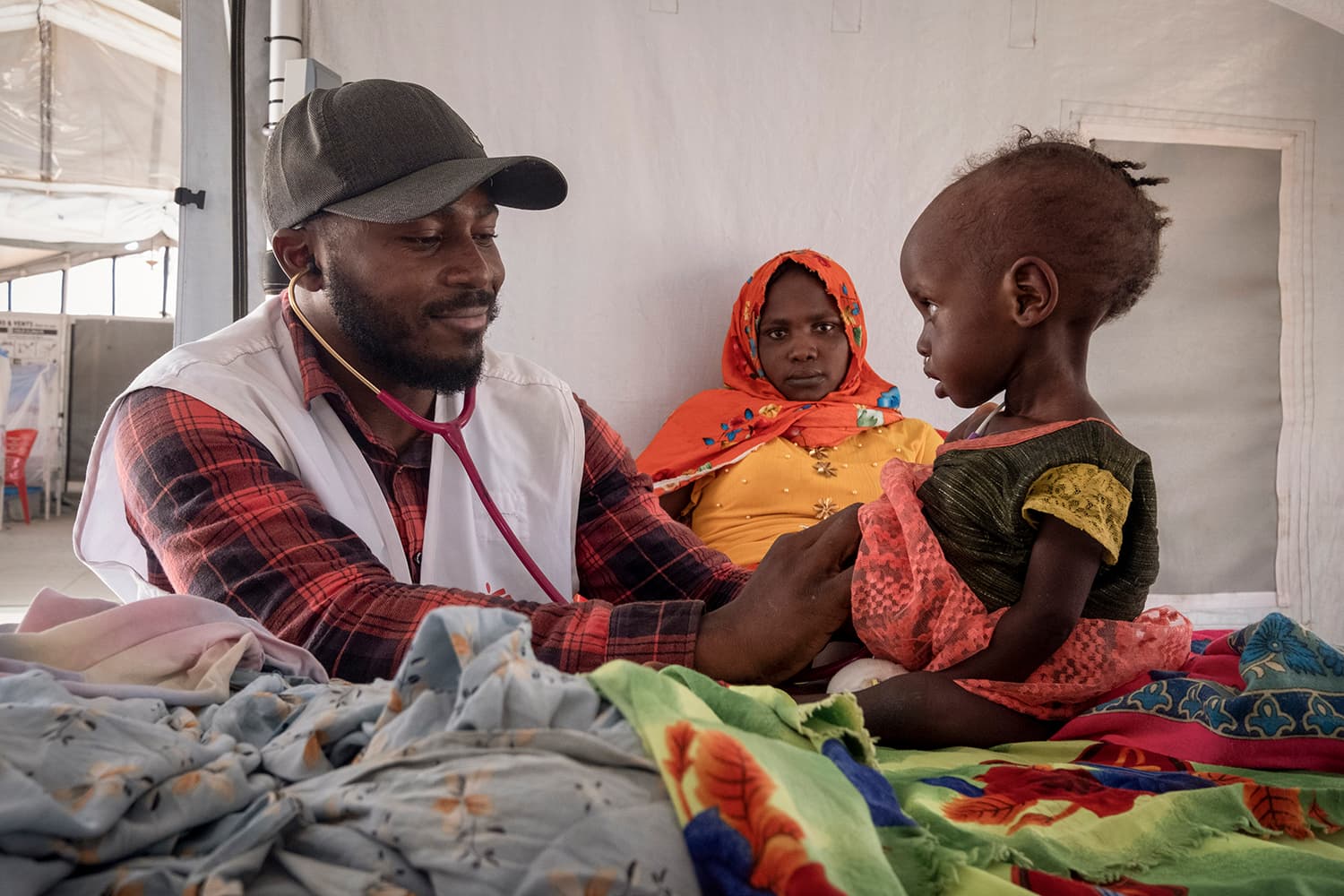Winter 2025
An American Approach to Foreign Assistance
– Ambassador Mark A. Green (Retired)
The “Journey to Self-Reliance” helps countries create opportunities for their people to rise and prosper.
On that first day when I entered the Ronald Reagan Building as administrator of USAID, I professed my belief that “the purpose of all foreign assistance should be ending its need to exist.” In my first sessions with senior staff, I added that when we came across communities, countries, and leaders who were taking up the often-difficult reforms needed to pursue self-reliance, we should strive to walk with them on that journey.
The policy framework that became known as the “Journey to Self-Reliance” may have been unveiled in Washington, DC, but it was really born many years earlier in a small village in rural Kenya.
In the little school where my wife Sue and I taught as volunteers, most of our classes had only one textbook for every half dozen students, forcing us to write out lessons word for word on the thick black paint that served as a chalkboard.
When the rains came, the moisture would blow in through our glassless windows and later drip down through holes in the corrugated tin roof, forcing students to rearrange their chairs to the driest parts of the classroom. When there were heavy downpours, the roar of rain against tin made teaching nearly impossible.
But our greatest challenge wasn’t the changing seasons or even the material shortages we faced each day; it was the financial costs that often kept families from sending their kids to school. There were the indirect costs: hours in the classroom or walking miles to school were hours not spent working the fields or retrieving water from a local pump or stream. There were the direct costs—school fees and uniforms—that put schooling simply out of reach for many.
Too many traditional aid programs are unintentionally patronizing. Without meaning to, they treat people as though they are hopeless and helpless—as though they need to be taken care of. Our goal was to seek out leaders who were doing whatever they could to help their people rise and their country to become more self-reliant.
And that tragedy was driven home to us every month or so when our headmaster felt compelled to “chase” students for money. He would solemnly walk into each classroom and then read off the names of those whose families had fallen behind in their payments. The “offending” students were expected to leave class immediately, not to return without some “small money” in hand.
I’ll never forget my first encounter with “chasing.” It was just a few days before an exam, and seven or eight students had their names called. While others kept taking notes—they were clearly accustomed to this process— these poor kids quietly stood up and left the room.

Not quite sure what to do, after a moment’s pause, I turned back to the chalkboard and began writing once again. A few minutes later, I heard a soft noise over my shoulder. When I stole a glance, I saw some of those same students carefully sneaking back into my class.
Thinking back to my days at Edison Junior High, now the notion of students sneaking in to school seemed unthinkable.
But in our entire year at that small school, not one student ever asked us for money. They might ask for help with books or extra lessons, but they never asked us for a handout. They wanted opportunities—and the chance to work for them. What we saw in our students’ eyes—their desperation to learn—what we heard when their parents hosted us for tea in their mud-walled homes, what we felt when village leaders shared their hopes for the community’s future…that was the basis for the “Journey to Self-Reliance” the Trump administration brought to USAID.
Too many traditional aid programs are unintentionally patronizing. Without meaning to, they treat people as though they are hopeless and helpless—as though they need to be taken care of. Our goal was to seek out leaders who were doing whatever they could to help their people rise and their country to become more self-reliant. Countries that weren’t waiting around for the world to help but were putting their own skin in the game and investing in their people to build their capacities and position them to seize opportunities for growth and development.
We wanted to play a role in helping countries go from being aid recipients to development partners to, in a perfect world, fellow donors. With those Kenyan students in mind, and many millions like them around the world, we wanted to walk with good leaders and their communities on their Journey to Self-Reliance.
Ambassador Mark A. Green (Ret.) is the president & CEO of the Woodrow Wilson International Center for Scholars. He served as administrator of the US Agency for International Development from 2017-2020, US Ambassador to Tanzania from 2007-2009, and a Member of Congress (WI-8) from 1999-2007.
Cover photo: Sudanese Children suffering from malnutrition are treated at an MSF clinic in Metche Camp, Chad, near the Sudanese border, on April 6, 2024. AP Photo/Patricia Simon, File.
